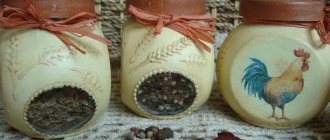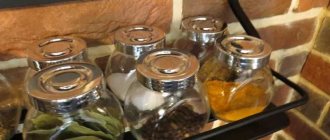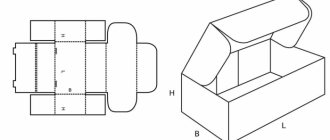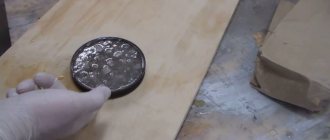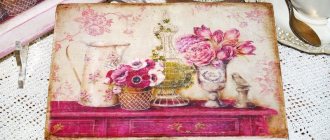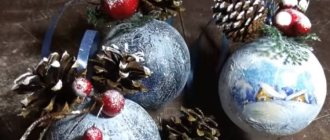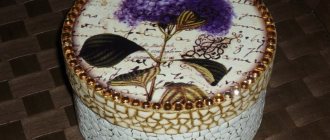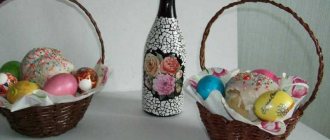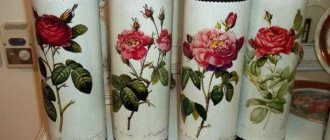Spice jars
Probably, each of us, taking care of our health, buys vitamins at the pharmacy and throws away the empty jars. So, I came up with a way to give these empty jars new life. I always buy spices packaged in bags, and when the bag is opened, it becomes a problem to preserve the aroma of the spices. So these jars are just right for storing dry herbs and spices. That is, from vitamin bottles you can make cute spice jars with your own hands , which will become a wonderful kitchen decor in a retro and country style .
Cans of other products
Often people buy preserved food in a glass jar, and then don’t know where to put the container. It can be used to store cereals. Other large containers made of plastic, glass or ceramics are also suitable. You can also use tin cans (for example, a package of canned pineapples).
This way you can improve not only the hygiene of storage, but also decorate the kitchen.
The main condition is a tight lid, which can be decorated with a beautiful ribbon. Thanks to this, harmful insects will not be able to get into the container.
It is recommended to store them in a kitchen cabinet to avoid direct sunlight. In addition, there is relatively little humidity, which is also a good condition.
For rational use, consider the number of family members. If there are a lot of them, then opt for capacious jars, but if there are small quantities, you can use small tanks.
VIDEO ON THE TOPIC ARTICLE
This article described how to make containers for cereals from glass containers. However, they can be made from almost any available materials, be it plastic bottles, tin cans or even cardboard. Master classes on performing such work are presented in the selection of videos below.
Do-it-yourself containers for bulk goods using decoupage technique. Master class with step-by-step photos.
Dymskaya Nadezhda, 7th grade student of the Nizhnekuryatskaya Secondary School of the Karatuz district of the Krasnoyarsk Territory.
Head: Ksenia Alekseevna Kruglova, technology teacher at the Nizhnekuryatsk Secondary School, Karatuz district, Krasnoyarsk Territory.
Description of work:
this work was performed by a student with disabilities.
This school year we finally moved to a new school! Therefore, bulk jars are necessary not only for decorating the new “Cooking” cabinet, but also for storing cereals, sugar, and salt. Our MK, we hope, will be of interest to teachers of technology, additional education, creative students, and parents. Purpose:
bulk jars are in demand in any kitchen.
You can make them not only for yourself, but also as a gift, for example, for housewarming, birthday, mothers for Mother's Day or March 8th. Purpose:
making containers for bulk products.
Objectives:
– learn to create containers for bulk materials;
– master the decoupage technique; – instill aesthetic taste; – develop hand motor skills; – develop perseverance, hard work, accuracy. Materials and tools:
– glass jar;
– white napkins or toilet paper; – decoupage napkins; – PVA glue, “Moment”; – gouache, brushes; – decorative zigzag tape; - scissors. Sequence of work:
1. We use a liter jar as a container for bulk materials. Wash it well, dry it and cover it with a lid.
necessary materials
yellow
Decorating your home is easy using scrap materials. Glass and tin jars that are thrown away as unnecessary can become the basis for creating attractive decorative items. Just look at the photo of decoupage cans to understand that in this way you can make the kitchen cozy, while the costs will be minimal.
On the shelves in the closet
This method of storing spices is of the closed type. Inside the cabinet, spices deteriorate more slowly because they are protected from the sun. To organize more convenient access to jars, you should design special shelves that will allow you to arrange seasonings more compactly. The photo shows a successful option in which the space is filled as ergonomically as possible. Chalk signatures are made directly on the lids, painted with slate paint.
Types of shelves for storing spices
In the kitchen space, jars are placed on separate shelves and special built-in structures. Modern railing systems allow you to beautifully and functionally fit any container for nutritional supplements into the interior - from a set of test tubes to wicker baskets. In such designs, both glass and wooden coasters look equally good.
A common solution is a separate drawer for storing cans or a small cabinet. Cardboard organizers and boxes woven from paper tubes keep flavors separate and easy to find.
What are the best containers for bulk products?
In order to ensure that all small products are in the same jars, you can immediately purchase a set of containers for storing bulk products. Today, the market offers kitchen appliances made from various materials.
- plastic;
- glass;
- ceramic;
- metal;
- wooden.
Containers for bulk products are also produced with a simple lid, a dispenser and the ability to vacuum. Before purchasing, it is recommended that you familiarize yourself with the advantages and disadvantages of each individual type. It is better to purchase products from trusted places and it is advisable that the seller has a quality certificate, because the material will come into contact with the products.
Plastic containers for bulk products
These are the most popular and sought after containers among housewives. Such jars for storing cereals are available in different shapes, colors and volumes. When choosing such products, it is important to pay attention to the smell; it should be barely noticeable, otherwise it is better not to buy such products. Modern sets of containers for bulk products consist of containers of different sizes that can be easily placed inside each other, while significantly saving space when not needed. Among the advantages of this type are:
- low cost;
- lightness of products;
- large selection of shapes and colors;
- ability to withstand low temperatures.
The disadvantages include:
- deformation when heated;
- cracking after time;
- During operation, the sealing properties are lost.
Glass containers for bulk products
The shape of such products is often similar to plastic containers. Glass jars for storing bulk products are safe and hygienic. The range of products is constantly expanding in accordance with the wishes of customers. The lids on such containers can be plastic, metal or glass. Additionally, there is a choice of closures: snap, twist and lock. A glass container for bulk products for the kitchen has the following advantages:
- transparency of the walls;
- ease of cleansing;
- absence of foreign odors;
- preservation of the aroma of the product;
- lid closure tightness.
Among other things, such plexiglass containers for bulk products also have some disadvantages:
- heaviness of products;
- high price;
- intolerance to sudden changes in temperature;
- fragility.
Ceramic containers for bulk products
These products have the same characteristics as glass ones, but they come in a wide variety of colors. Such containers are often marked with an image that corresponds to the product that is inside. Ceramic storage jars have the following advantages:
- can be used as decorative elements;
- tightness of the lid;
- ease of care;
- no foreign odor.
Such containers for pasta and other bulk products have certain disadvantages:
- with frequent opening, the seal is lost;
- when heated or cooled, the appearance deteriorates;
- heavy weight and fragility of products.
Metal containers for bulk products
Among all the options offered on the metal products market, it is recommended to pay attention to stainless steel or food-grade aluminum; they are not subject to corrosion. Products are available in different forms. Lids come with threads and latches. Beautifully painted jars can become an original decoration for a kitchen in a retro or country style. Such tin containers for bulk products have the following advantages:
- ease;
- strength;
- no penetration of sunlight.
Among the disadvantages are:
- prohibition on heating in the microwave;
- corrosion may occur;
- Inexpensive products have a metallic taste.
Wooden containers for bulk products
These containers are the least practical. Often this set of jars for storing bulk products is used as decorative elements in the kitchen and this is their advantage. The disadvantages include:
- lack of a sealed lid;
- high absorption of moisture and odors;
- difficulty in cleansing;
- high price.
Drawers
Probably, almost everyone has seen racks for selling tea and coffee - a large number of small sealed boxes with transparent side doors.
You can allocate a separate area in the kitchen for such tanks, or you can order an original kitchen set, where such tanks are installed in any order. This will add originality to the kitchen and will look like an original design technique.
The price for such a set will be high, but the final result will please any lover of original furniture.
However, there is one caveat. If you are not particularly careful, you will have to refuse this option. You will have to be careful to keep the clear doors clean and the containers full. Half-empty, they will not look so aesthetically pleasing.
As you can see, there are many ideas that completely refute the standard ideas about how you can store spices and bulk products in the kitchen. We tried to collect the most original solutions for you, but this does not mean that you should limit yourself exclusively to them.
You can use one of our ideas for storing cereals and dried herbs, or you can come up with your own based on them. Don’t be afraid to experiment with interior design – perhaps you will be the one who can say a new word in kitchen design.
Technological nuances
For the kitchen, jars are decorated from various materials:
- tin cans, they make excellent lightweight jars for cutlery and herbs;
- iron containers for tea or cookies, they are convenient because they close tightly with lids;
- plastic, they are distinguished by a variety of shapes, volumes, and are well equipped;
- glass, they come in a wide variety of shapes, with and without lids (metal or plastic screw-on);
- cylindrical cardboard chips, they are convenient for storing small items that are rarely used (pastry syringe, cookie cutters, muffin tins);
- For jars with lids, before painting, the edge where the lid goes is covered with masking tape for ease of use.
Choosing a base for crafts
Before you make spice jars with your own hands, you need to choose the right base for them.
This will help you get a higher quality and more durable product. Seasoning jars can be of absolutely any shape and size. Their choice depends entirely on the personal preferences of the housewife and the amount of spices stored. Jars can be made from various materials. Among them, the most commonly used are the following:
- Glass. These transparent containers are the most popular, as they allow you not only to safely store spices, but also to easily control the remaining quantity. Professional chefs advise choosing jars made of dark and opaque glass. This is necessary so that the seasonings are not exposed to direct sunlight, which spoils them. Transparent containers can only be used when storing small quantities of spices, which is ideal for home use. During the cooking process, you can easily separate one seasoning from another by appearance. This saves a lot of time and also looks more attractive. Transparent glass jars will complement any kitchen interior well and create a homely atmosphere in it.
- Ceramic. In most cases, jars of this material are made not for storage, but for serving spices on the table. It is recommended to put salt and different types of peppers in such containers. Ceramics is a very interesting material that allows you to make not only simple jars, but also shaped ones (in the form of animals, interior and household items). On the holiday table, these containers with seasonings rather serve a decorative function and are rarely used for their intended purpose.
- Metal. Most often, a set of such containers for storing seasonings is used to create the interior of kitchens in the style of high-tech and minimalism. If you apply them in everyday life, you may encounter some problems that will affect your attitude towards this material. The most significant of them are heaviness, opacity, monotony.
- Wooden. These spice containers are suitable for creative people. Wood is a very malleable material, so the jars can be decorated with some kind of painting or carving. They are ideal for rustic kitchens and complement all other items harmoniously. In addition to their attractive appearance, they also preserve spices efficiently. Because wood is a natural material, there is no need to worry about negative effects on seasonings and health.
If jars are made for long-term storage of spices, then you need to take care not only of their appearance, but also of a tightly screwed lid. Without it, you should not use the selected containers for storing spices.
How to decoupage a jar with a window
Decide where on the jar there will be a place for the window. This jar will have an oval window, but you can make it any other shape. Cut out an oval of the required size from the Oracal application film, remove the protective layer and glue it to the selected location. Paint the jar with metallic paint. Wait until the paint is completely dry and apply the craquelure varnish. The other side of the jar will be decorated with a napkin, so do not cover this area with craquelure. When the craquelure has dried to a “light tack” state, cover the jar with acrylic latex paint using a sponge. Try to do this with quick, confident movements, without hitting the same spot twice. Dry the jar with a hairdryer, remove the protective film and coat it with varnish all except the window. Tear out the fragments you like from the prepared napkin. Note to the needlewoman.
Oracal application film can be purchased in stationery stores in A-4 sheets.
DIY spice jars
Here are the original jars. First, the old frayed labels had to be removed from them, washed and dried.
Then everything is very simple. Let's paint the outside of the spice jars and lids with regular acrylic paint, which is used to paint walls during renovation. Apply the paint with a piece of washcloth in two layers. Each layer must be well dried.
We continue the master class: take a napkin for decoupage.
Let's select the necessary fragments of the images onto napkins and carefully cut them out with ordinary nail scissors.
If the napkin has three layers, separate only the top layer with the image from the napkin.
Let's prepare fragments for two spice jars. I will use one jar to store dried mint, and the other for bay leaves.
Since the napkin is of very high quality, the design is bright and the top layer is quite dense - without any processing, I immediately glued the images onto the jars and lids using decoupage glue.
I applied the glue on top of the napkin.
Leave the jars for the glue to dry.
In the meantime, I will continue the decoupage master class and prepare the next stage of work. We print out the names of herbs (and spices) on a regular color printer, and spray this sheet with strong-hold hairspray. Let's wait until the varnish dries and do this three more times. Thus, the varnish will fix the paints so that they do not spread when in contact with the glue.
Let's start creating
If you use glass jars and like to draw, then everything is simple - you can paint the jar using stained glass paints. If drawing is difficult, you can use a stencil. Let's look at the example of painting.
Materials: stained glass paints, black outline, glass jars for spices, brushes, stencil, PVA glue, alcohol, measuring tape, cotton swabs and needles or toothpicks.
Let's start with a step-by-step example of painting.
To begin, cut out the prepared pattern. But not along the contour, but with an allowance. You can choose any drawing to suit your taste. Measure the circumference of the jar with a centimeter. The drawing should be the same number of centimeters if we place it on the entire circumference. Trim off the excess along the contour. Place the design inside the jar so that the stencil is visible from the outside. Glue it pointwise inside the jar using PVA glue, as shown in the photo. Wait until it dries completely. This usually lasts about 15 minutes.
Treat the surface of the glass jar with alcohol. This will degrease it and allow the paint to lay down evenly.
Let's proceed directly to stained glass painting. Using brushes No. 1 or No. 2, outline the silhouettes of the drawing with black contour paint. Smooth out any drips using a toothpick or cotton swab. Let the paint dry a little.
Using a thicker brush, fill in the details of the picture with the appropriate colors.
You can also decorate the lid. To do this, draw an arbitrary picture or using a stencil. Next, the execution sequence is the same as with the jar. Allow the jar to dry completely, this usually takes about a day. Remove the stencil from the inside of the jar and wash off the remaining PVA glue with warm water. The jar is ready, you can fill it with spices and place it in a prominent place in the kitchen.
Another example of a simple decor for spice jars can be prepared jars with inscriptions on the ropes. But the inscription needs to be processed. This can be done using construction or acrylic varnish, or pasted over with wide tape on both sides.
Decorating a spice jar with textiles can be an original and beautiful decor. The fabric should be dense, you can simply glue it to the jar, make inscriptions and open it with varnish.
Another beautiful and original solution could be decorating a jar with decoupage.
Materials: glass jars for spices, PVA glue, scissors, brush, acrylic paints and varnish, beautiful decorative napkins, white napkins.
The decor making process is very simple. Using PVA glue, glue several balls of napkins onto a clean jar. Let it dry. Meanwhile, remove the two inner balls from the decorative napkins and cut out the decorative elements. Carefully cover the jar with elements and smooth it with a brush with glue. Let the jar dry completely and cover it with glue. The spice jar using the decoupage technique is ready.
There are many decor options. From simple painting of lids, gluing stickers to decorating with textiles, artificial flowers, polymer clay, napkins with original designs, strands, ropes, beads, pearls, grains, cereals, seeds and everything you can imagine.
We will provide several examples of decorating jars of varying complexity for inspiration.
It’s very easy to create beauty and comfort with your own hands from simple materials! It doesn't matter what method or technique you choose. You can start simple and work your way up to the most complex options. You can express yourself in painting, you can in the art of decoupage, you can just stick to practicality. The main thing is not to be afraid of experiments, try, do. The work will always be original and pleasing to the eye, and perhaps even cause surprise, both for the housewife, household members and guests. Try it!
Materials for making spice sets
When decorating a kitchen island, spice sets are often used.
Such kits contain from two to eight containers. Traditionally these are jars for salt and pepper. The set includes jars for aromatic herbs and pepper.
Containers for spices can have small holes or have a fully opening lid. Such containers are equipped with a teaspoon.
Beautiful containers are made from the following materials:
- Glass can be transparent or colored and with ornaments.
- Ceramic material is environmentally friendly.
- Metal products are suitable, but only moisture-resistant ones.
- Wood makes lightweight containers.
How to apply
In order for the jar to be bright, beautiful and original, it should be designed correctly. Ideas:
- decoupage style;
- hand painted;
- sackcloth.
If you decide to use the first method, then you can use any style. Cut out a beautiful pattern from a napkin or card and then attach it to the jar.
It is best to choose an opaque container for this technique. But transparent fragments will also work. This way the contents of the jar will be visible.
It is recommended to coat the entire surface with varnish for extra shine. In addition, this way the jar can be wiped with a damp cloth.
Handmade painting will make the jars original and unique. You can draw simple geometric patterns or complex ones, depict your favorite animals, people, or draw flowers.
If you do not have special artistic skills, then decorate the container with a simple pattern. In the middle you can write the name of the cereal in a beautiful font.
There is also a simple and quick decoration option - burlap. It will fit into the interior of the kitchen and give it a country style. Burlap itself is a bit rough, so it's better to use lace, buttons or small shells.
You can decorate the whole jar or part of it with burlap. It is worth remembering the disadvantage: such containers are difficult to wash on an ongoing basis, so you will have to frequently update the interior.
Despite proper storage, it is important to remember that any cereal has an expiration date. Its appearance may remain unchanged, but the smell changes. It is recommended to attach a label to each container indicating the time of purchase of the cereal.
Subscribe to our Social networks
Decorating jars with salt
If you don’t care about practical use, but still have the desire to make something beautiful, decorating jars with salt is for you. Many of you have seen how they sell Abkhazian or Georgian spices in vessels where the colors change from one to another.
We will do the same with salt in jars. This begs the question: how come the salt is all white? Nowadays you can find salt in a variety of colors. Moreover, it can be consumed - it uses food coloring.
Buy several varieties of salt (based on color) and pour them into a jar in layers.
Make layers of approximately two centimeters. Repeat colors after the entire “palette” is finished. Place a piece of burlap on top and tie it with thread, tying a bow.
You can put this decoration anywhere. Make about 5-6 of these jars of different sizes, and arrange them like a nesting doll. Use all your creativity on similar products. Don't worry that it might not work out. This hobby has exclusively amateur roots, so any craft will be received by others with a bang.
Experiment to unleash your creative potential. Only in this case can decorating jars from an evening activity be able to turn into a small business that will delight others. Your home will be transformed into a more cozy space, filled with handmade products that give a wonderful atmosphere of comfort. This hobby is very easy to teach children.
This is not expensive at all, and is also really exciting, because the child will direct all his creativity into making something incredibly beautiful and stylish out of an everyday thing he sees every day. Perception will reveal the whole essence of this activity, which will definitely help you.
Tags
for spices with my own love spices. for spices for spices with my own storage of spices with spices. storage of spices lost for spices and with my own hands skillful hands with my own hands Handicraft masters invented with my own hands. for handicrafts. with my own hands and with my own hands. with my own hands quickly with my own hands Decorating jars Decorating jars try your hand spices with your own hands spices with their own hands lose their aroma of spices with their own hands. The remaining loose ends at their own discretion. all their beneficial properties and which by their appearance
need paper seasonings articles brush pattern create an outline interesting crafts
